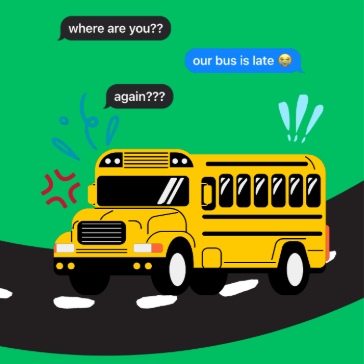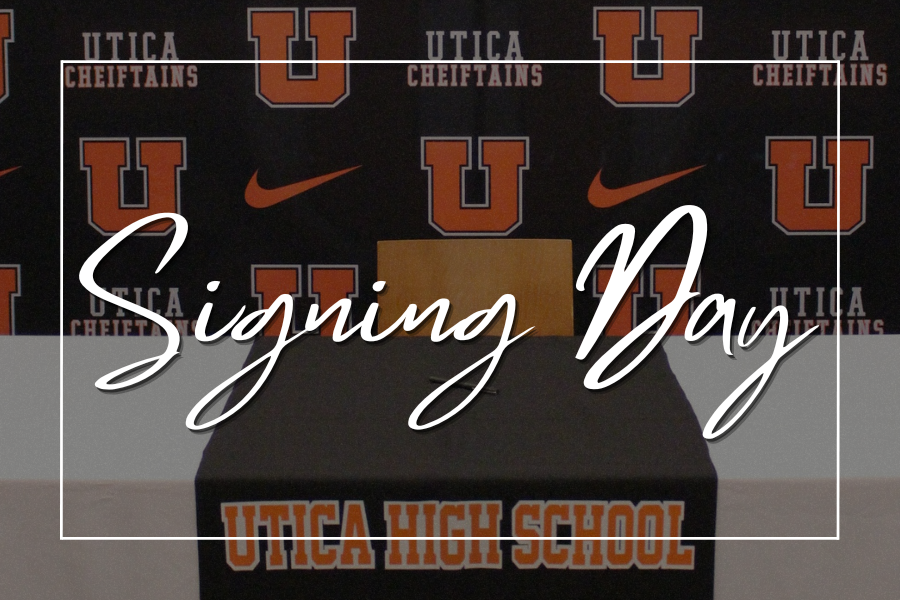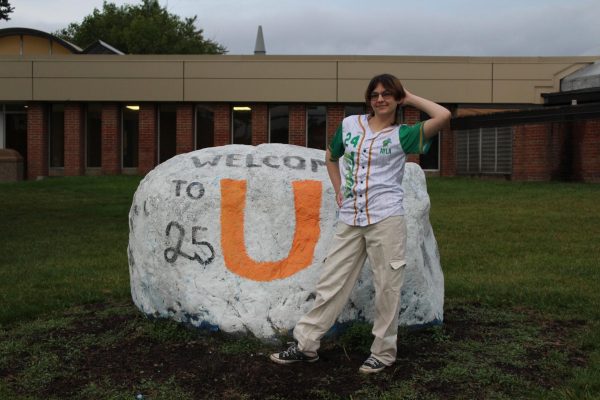Late, crammed, and hungry–this became the daily routine for many sophomore and junior students traveling to the Instructional Resource Center (IRC), home to specialty programs like the Utica Center for Mathematics, Science, and Technology (UCMST) and Utica Center for Science and Industry (UCSI), thanks to an unpredictable and unreliable bus system. The bussing system, which is supposed to provide two departure times–an ‘early’ bus leaving around 10:27 a.m. and a ‘late’ bus leaving around 10:40 a.m.–experienced disruptions, with missing and delayed buses occurring frequently starting back as early as quarter one.
By late January, students arriving merely minutes before class starts–or even as it was starting–had become a common sight at the IRC. The usual bus schedule, meant to get early bus riders there early, became unpredictable as missing and late buses left students scrambling to arrive on time. Some even missed pre-class activities, like baked goods sales, that normally gave them a few extra minutes to settle in before lessons began.
The delays didn’t just inconvenience students – they directly impacted their academics. For some, repeated tardiness even began to strain their relationships with teachers, despite the issue being out of their control.
“A lot of us were late to class, and this happened at least five times,” junior Riley Burton said. “At that point, it was just like ‘okay, this is a problem.”
But the delays’ impact went beyond just arriving late. Class time was being lost and major events like tests were being shortened. This left students struggling to keep up and teachers struggling to stay on schedule.
“One day we had a test, but we were 20 minutes late to class, so our test got shortened,” Burton said. “Our teachers were getting annoyed too, because half the kids were late to class every day and they couldn’t do what they needed to.”
The time crunch didn’t end once students arrived at class. With buses leaving later than scheduled, many students who relied on lunch breaks during the bus ride were left with little to no time to eat. Sophomore Audrey Hinton, for example, struggled to find time to eat.
“I’ll usually eat lunch on the bus or when I get to the IRC,” Hinton said. “The delay changed that, though, because I didn’t have any time to eat my lunch. It made me annoyed when I tried eating but didn’t have the time for it.”
On top of delays, overcrowding on the buses became a frequent problem. When one bus driver was out on medical leave, only one bus was available to bus the sophomores and juniors.
“That was a huge thing because it got really packed,” sophomore Josie Otis said. “There was a point where two to three people were at every seat. It was just a lot. There was a lot of commotion, then we’re all scrambling to get off the bus and be on time for class.”
As the bus issues persisted, some students decided to find their own solution – driving themselves to the IRC. For those with access to a car, this seemed like the most reliable way to avoid tardiness and missed class time. However, even this situation came with its own complications.
“At the IRC, you’re not supposed to be driving yourself,” Burton said. “You have to get a parking pass and it’s a big deal there. It is kind of a problem to get a parking pass, especially when it was every day that we were driving.”
While some students found temporary workarounds, the ongoing bus delays remained a source of frustration for many. However, in recent weeks, the issues have started to lessen, with buses arriving more consistently and students facing fewer delays. While not perfect, these improvements have given students hope that transportation will continue to stabilize, ensuring they can get to class on time without the daily stress of an unreliable ride.










